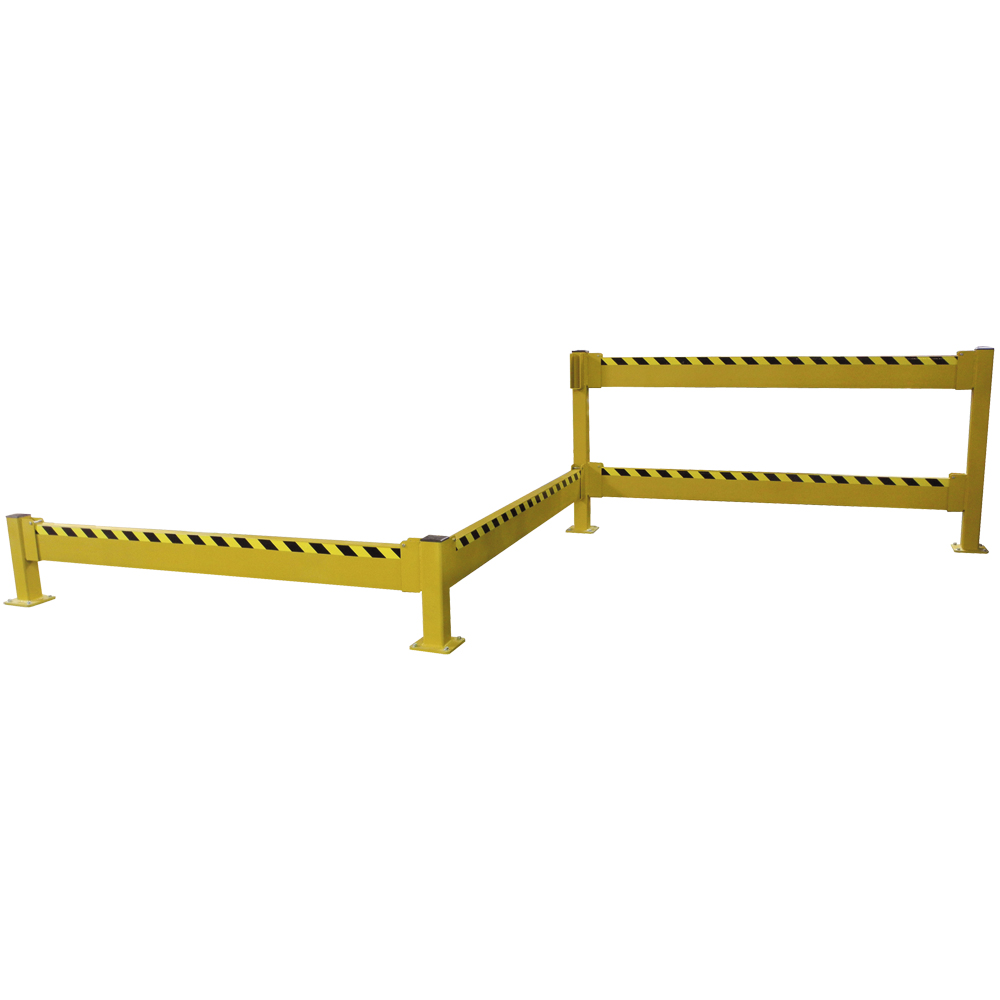We use cookies to make your experience better. To comply with the new e-Privacy directive, we need to ask for your consent to set the cookies. Learn more.
Protecting Pallet Racks From Forklift Damage
Start typing “pallet rack” into YouTube, and your search might autocomplete with “pallet racking collapse.” Hundreds of videos show racks collapsing, ruining hundreds of thousands of dollars in products, injuring workers, and in at least one famous case, bringing down an entire warehouse.
It’s easy to blame the workers, but pallet rack damage is usually caused by a bad floor plan or inferior shelving. This is especially true for warehouses that utilize every inch of available space; more storage usually means a more profitable warehouse, but ultra-efficient floor plans require narrow aisles which are tough to navigate. With fast-paced work and a tight fit in the aisle, even the most attentive forklift operator will occasionally knock into pallet racking.
A minor ding here and there won't lead to immediate disaster, but forklift strikes do have a cumulative effect, diminishing shelving integrity over time. The good news is that your facility can defend its racking systems from this type of damage, preventing the disastrous consequences of an industrial shelving collapse.
Manufacturers recommend a common list of procedures to avoid damaging racks, including ongoing training for forklift operators, clutter-free aisles, and adequate lighting. Among industry recommendations for maintaining secure pallet racking, though, three major themes come up again and again: 
Install Forklift Structural Barriers
While you probably can't prevent every forklift impact, you can choose what takes the hit. Heavy duty guard rails prevent lift trucks from damaging racking, even in high-risk areas.Lift truck strikes are most common at the end of a row. Protect row ends with sets of structural bollards, which offer superior impact resistance. For even greater protection, install low-profile barriers around the base of the entire unit.
Avoid Used Racking
Facility managers may be tempted to save on pallet racks by buying used systems. Independent safety consultants are clear on the subject: don’t do it, or you might end up on one of the YouTube videos we referenced earlier.In trade journal Material Handling and Logistics, one consultant explains that reconfigured racking beams can diminish the strength of the entire structure. With used racking systems, there's no way to tell if beams are placed at the manufacturer's recommended heights, and it's much harder to gauge the structural integrity of the system.
The Rack Manufacturer's Institute points out another advantage to new equipment: if an accident involving racks does occur, responsible operations will want to show proof that their infrastructure is compliant with all ANSI/RMI specifications. Used racks may not be up to code, and if they are, they rarely come with the documentation to prove their compliance.
Conduct Periodic Inspections
Racking failure does not occur spontaneously. There are usually signs of trouble well in advance of catastrophic accidents, and periodic inspections of pallet racks can alert managers to damaged systems before they fail.Inspectors should check for damage along the entire height of racks, paying special attention to the lowest 6 to 12 inches of vertical columns, where forklift strikes are most common. They should also make sure racking units aren’t bowing or leaning into aisles. The Rack Manufacturer's Institute doesn’t specify a frequency for inspections, leaving it "up to the discretion of the owner,” but they do suggest a once-yearly minimum. Other experts recommend incorporating rack inspection into existing safety inspection schedules.
Eliminating Forklift Strikes to Prevent Rack Failure
Thankfully, fatalities rarely occur due to collapsing shelves. In 2013, only one worker was killed by "collapsing structures, equipment or material" in the United States warehousing and storage industry, according to the Bureau of Labor Statistics. Still, racking failure is common enough to have spawned its own YouTube sub-genre, and lost product is a serious issue for any warehouse or storage facility. By accepting that strikes happen, you can plan your facility more effectively (and keep your warehouse from playing a starring role in the next big viral video).
References:
Andel, Tom. "How to stop rack failure." Material Handling & Logistics 2014: 20. General OneFile. Web. 30 June 2015.
Coleman, Michelle. “Best Practices for Preventing Pallet Rack Damage.” Inbound Logistics. Thomas Publishing Company, 2015. Web. 30 June 2015.
"Data Tools." Bureau of Labor Statistics. United States Department of Labor, n.d. Web. 30 June 2015.
“RMI FAQs.” Rack Manufacturer’s Institute. MHI, 2015. Web. 30 June 2015.
